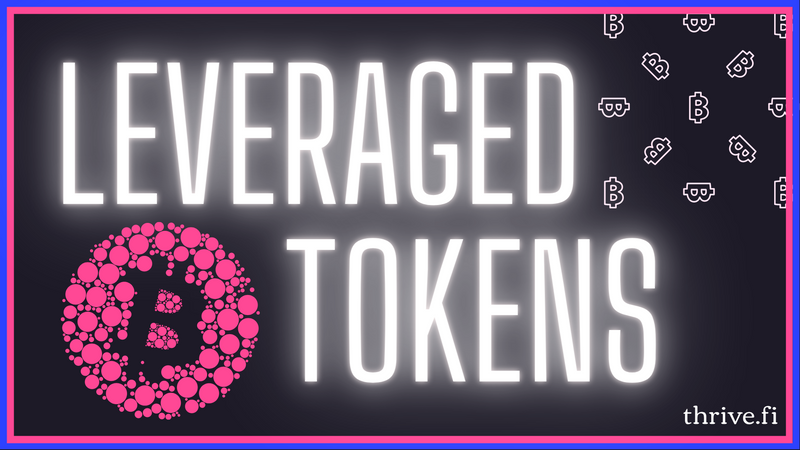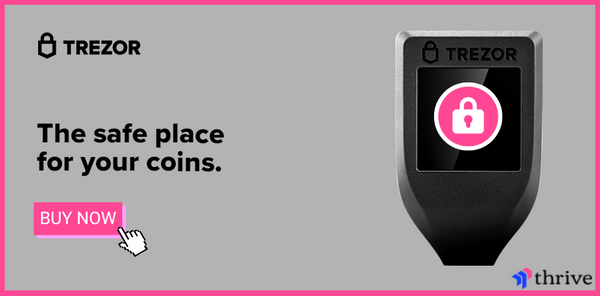Leveraged Tokens Explained

Leveraged Tokens Explained
What is a leveraged token and how does it work?
A leveraged token is a type of cryptocurrency that allows holders to gain leveraged exposure to the underlying asset, such as a stock or commodity, without the need for margin accounts or derivatives. They work by using a collateralized debt position (CDP) on a blockchain platform to create tokens that track the price of the underlying asset, but with leverage built-in. The amount of leverage can vary, but it is typically 2x or 3x the price of the underlying asset. When the price of the underlying asset goes up, the value of the leveraged token also increases, but with greater volatility than the underlying asset.
When the price of the underlying asset goes down, the value of the leveraged token also decreases, again with greater volatility. It's important to note that leveraged tokens are highly speculative and come with a high degree of risk.
How does leverage affect the value of a token?
Leverage affects the value of a token by amplifying the gains or losses of the underlying asset. For example, if the underlying asset has a 2x leverage, a 1% increase in the price of the underlying asset will result in a 2% increase in the value of the token. Similarly, a 1% decrease in the price of the underlying asset will result in a 2% decrease in the value of the token. This means that leveraged tokens have the potential to generate larger returns than the underlying asset, but they also come with increased risk.It's important to note that leverage also amplifies the volatility of the token. As the underlying asset's price goes up and down, the leveraged token's price will move at a greater rate. This can result in both large gains and large losses in a short period of time. Additionally, leverage also increases the risk of liquidation. If the value of a leveraged token falls below a certain level, it may be automatically sold to pay back the borrowed funds, and the holder may lose more than their initial investment.
What are the risks associated with investing in leveraged tokens?
There are several risks associated with investing in leveraged tokens, including:High volatility: Leveraged tokens are highly volatile, meaning that their value can fluctuate rapidly and unpredictably. This can result in large gains and large losses in a short period of time.
Risk of liquidation: If the value of a leveraged token falls below a certain level, it may be automatically sold to pay back the borrowed funds, and the holder may lose more than their initial investment.
Risk of counterparty default: Leveraged tokens are often issued by unregulated entities, and there is a risk that the issuer may default on their obligations.
Lack of regulation: Leveraged tokens are not regulated by any government agency, which means that there is little oversight and protection for investors.
Complexity: Leveraged tokens can be difficult to understand and may not be suitable for all investors.
Risk of flash crashes: As leveraged tokens are highly leveraged, they can be subject to flash crashes, where the price of the token can rapidly drop.
Risk of margin calls: Leveraged tokens require the holder to maintain a certain level of collateral, if the collateral drops below a certain level, the holder will have to either deposit more collateral or the position will be closed.
It's important to note that leveraged tokens are highly speculative and come with a high degree of risk. They are not suitable for all investors and should be approached with caution. It's always recommended to do your own research and consult with a financial professional before investing in leveraged tokens.
How are leveraged tokens different from traditional leveraged products?
Leveraged tokens and traditional leveraged products, such as margin accounts or derivatives, serve the same purpose, which is to amplify the returns of an underlying asset. However, there are some key differences between the two.One major difference is that leveraged tokens are built on blockchain technology, while traditional leveraged products are not. This means that leveraged tokens can be traded on decentralized exchanges and are more accessible to a wider range of investors.
Another difference is that leveraged tokens are much more volatile than traditional leveraged products, meaning that their value can fluctuate rapidly and unpredictably. This can result in large gains and large losses in a short period of time.
Additionally, traditional leveraged products are typically regulated by government agencies, while leveraged tokens are not. This means that there is less oversight and protection for investors in leveraged tokens.
Can leveraged tokens be used for short selling?
Yes, leveraged tokens can be used for short selling. Short selling is a trading strategy where an investor borrows an asset and sells it, with the expectation that the price of the asset will fall. The investor can then buy the asset back at a lower price and return it to the lender, while keeping the difference as profit.With leveraged tokens, an investor can use the built-in leverage to amplify the potential returns of short selling. For example, if an investor believes that the price of a certain asset will fall, they can buy a 2x leveraged token that tracks the price of that asset. If the price of the asset does indeed fall, the value of the leveraged token will fall at a greater rate, resulting in a larger profit for the investor.
However, it's important to keep in mind that short selling is a high-risk strategy and leveraged tokens come with their own set of risks, such as high volatility and the risk of liquidation.
What is the process for buying and selling leveraged tokens?
The process for buying and selling leveraged tokens is similar to that of other cryptocurrencies. The first step would be to set up a digital wallet that supports the leveraged token you wish to buy or sell. Next, you can purchase the leveraged token on a cryptocurrency exchange that lists it.When buying a leveraged token, you will need to provide collateral, typically in the form of the underlying asset or another cryptocurrency. The collateral is used to provide leverage, and the amount of leverage varies depending on the token. Once you have provided the collateral, you will receive the leveraged tokens.
When selling a leveraged token, you will need to return the tokens to the exchange, and the collateral will be released back to you. You can then withdraw the funds to your digital wallet.
It's important to keep in mind that the process of buying and selling leveraged tokens can vary depending on the specific token and the exchange you are using. Some exchanges may have different requirements or procedures, so it's always recommended to read the documentation and follow the instructions provided by the exchange.
READ MORE: The Ultimate Guide to Decentralized Exchanges (DEXs)
How are leveraged tokens affected by market volatility?
Leveraged tokens are highly affected by market volatility, which means that their value can fluctuate rapidly and unpredictably in response to changes in the price of the underlying asset.When the market is bullish, and the price of the underlying asset is going up, the value of the leveraged token will also go up, but at a greater rate, due to the leverage built-in. This means that leveraged tokens have the potential to generate larger returns than the underlying asset in a bullish market.
On the other hand, when the market is bearish, and the price of the underlying asset is going down, the value of the leveraged token will also go down, but at a greater rate, again due to the leverage. This means that leveraged tokens are more susceptible to losses than the underlying asset in a bearish market.
Are leveraged tokens suitable for long-term investment?
Leveraged tokens are not typically suitable for long-term investment. They are highly speculative and come with a high degree of risk. Their value can fluctuate rapidly and unpredictably, and they can experience large gains and large losses in a short period of time.Also, leveraged tokens require the holder to maintain a certain level of collateral, if the collateral drops below a certain level, the position will be closed, and the holder may lose more than their initial investment.
Additionally, leveraged tokens are often issued by unregulated entities, and there is a risk that the issuer may default on their obligations, so there is a risk of counterparty default.
Long-term investment strategies typically focus on investing in assets with a proven track record of stability and growth over time, such as stocks, bonds, and real estate. Leveraged tokens, on the other hand, are a new and highly speculative investment tool that is not suitable for all investors.
In short, leveraged tokens are high-risk products that are not suitable for long-term investment, and it's recommended to approach them with caution and consult with a financial professional before investing.
READ MORE: Average Directional Index Indicator (ADX)





